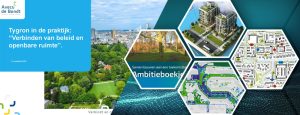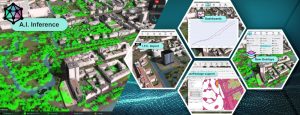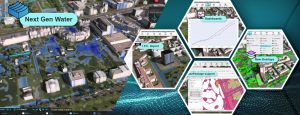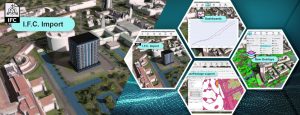The annual Tygron Community of Practice took place this year on November 11th. This meeting is by and for users: a moment where knowledge, experience, skills, applications, and the latest technological developments converge. During the CoP, various Tygron users shared their experiences using the platform, including employees of the municipality of Deventer.
Deventer is growing, and rapidly. Not only in terms of population, but also in terms of ambition. Margriet Achtereekte, Geovisie Leader for the municipality of Deventer, outlines the dilemma: “The total surface area demand is much larger than Deventer’s available surface area.” This presents significant challenges. Deventer needs to build 11,000 homes by 2035, and there’s also a need for a new business park, substantial investments in energy infrastructure, and the challenge of greening the city.
“We’ve been testing digital tools to get a handle on our growth,” says colleague Gijs Schulkes, Coordinator of the Geo-information Department for the Municipality of Deventer. The challenge is to make smart choices that combine mobility, livability, and climate adaptation within the constraints of limited space. A digital twin of the municipality offered a solution. Not so much as a solution to all problems, but as a strategic tool to make future developments transparent and therefore manageable.
Condensation and greening
It was a bit of a gamble, Achtereekte admits. “We said to each other, we have three months.” Three months to use a digital twin to prove that you can add 11,000 homes to Deventer without adding another expansion neighborhood. “Let’s just draw a contour around the city and not build outside of it.” But also, without the city becoming congested or the green spaces disappearing. So, densification. But where, how high, and with what impact? That’s precisely what the digital twin is being used for, as a kind of data-driven second opinion, giving policymakers a picture of the consequences of their decisions.
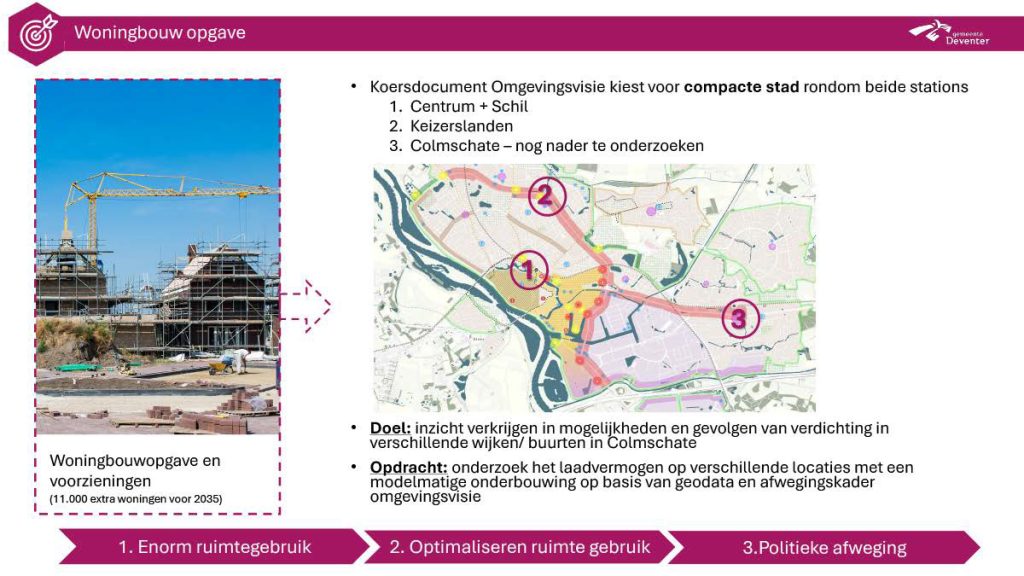
According to Schulkes, the internal motto was: “We’re just going to start and see where we end up.” By using existing insights and datasets from previous Tygron projects, for example, in Nieuwegein, progress could be made quickly. As the project progressed, it became clear that the digital twin could only be effective if various disciplines were actively involved. Colleagues from urban planning, landscape, mobility, and climate adaptation joined the sessions, bringing together knowledge and perspectives. Achtereekte: “Each session became a little more full, because colleagues shared their experiences and then joined the next time.”
Speaking the same language
Between sessions, questions and ideas were discussed by phone or email, according to Schulkes: “We were constantly being approached. Could we have another chat with that colleague? Could we talk about this some more?” This led to an iterative process in which policy content, data analysis, and design thinking were constantly aligned. And, importantly, in which everyone involved increasingly began to speak the same language.
Two example areas around Colmschate station and the town center were calculated.
“We developed indicators to compare strategies,” says Achtereekte. This allowed them to test options for themes such as densification, greening, livability, and mobility. The team explicitly built scenarios based on design regulations and municipal preconditions. Schulkes: “With these preconditions, we examine how the design can subsequently develop.” The final result was clear: densification and greening go well together. “This was also to show, hey, it’s possible.”
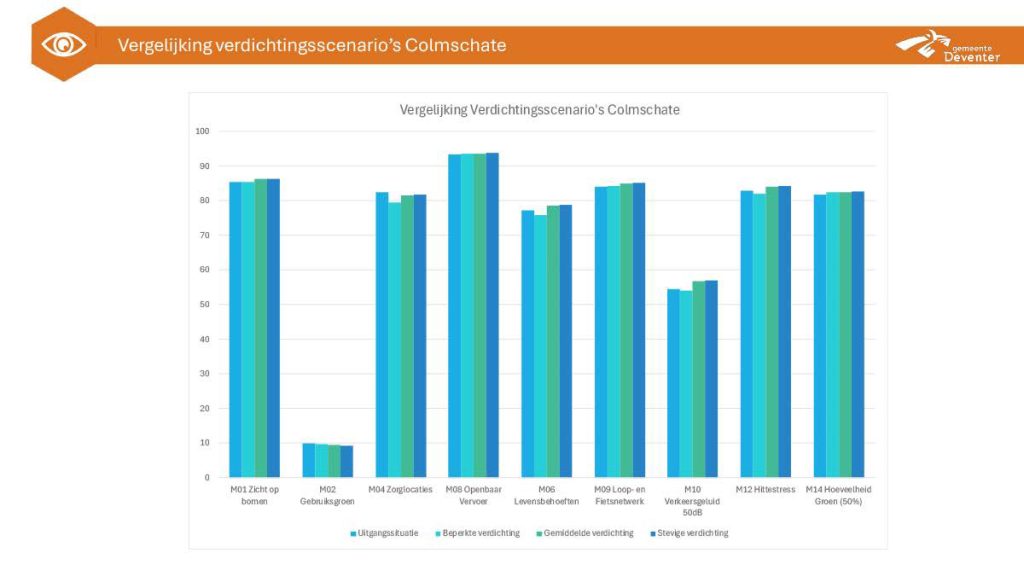
Sim City
The presentation to the council was tense. Reactions ranged from, “A kind of Sim City, can I try it too?” to, “Oh no, this really can’t be shared, because it’ll go completely wrong.” Ultimately, the project was received enthusiastically. The intention to further develop the project has since been expressed. The lesson is clear. “Choose a pragmatic approach,” Schulkes emphasizes. “Break it down into small pieces, otherwise it’s simply unmanageable.” And Achtereekte adds: “You need a reason and a sense of urgency to quickly get colleagues in the right position.” Three months proved just enough time in Deventer to go from skepticism to, “Shall we do a follow-up on this?”

